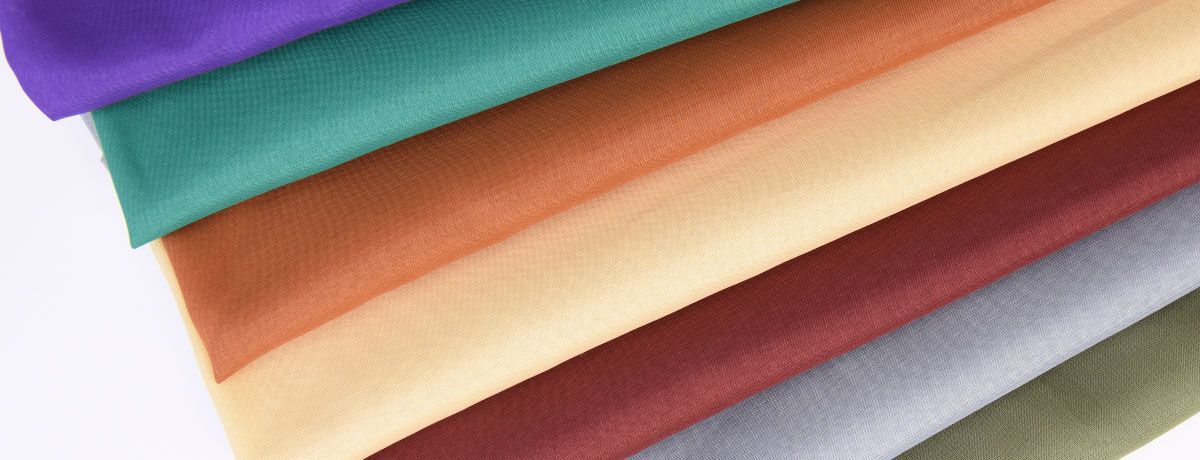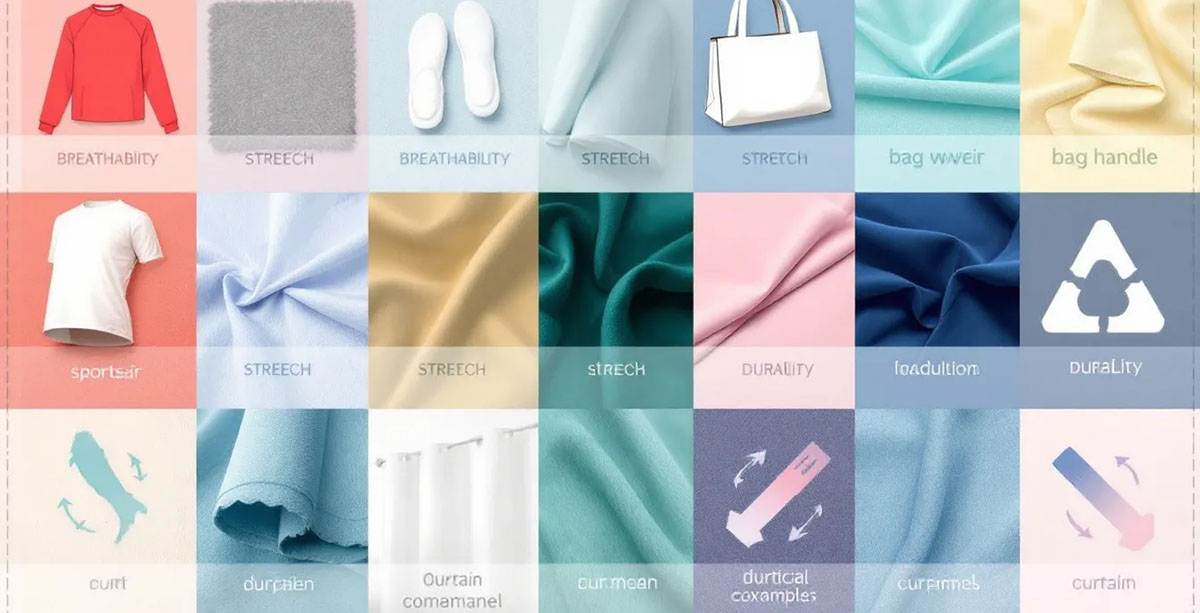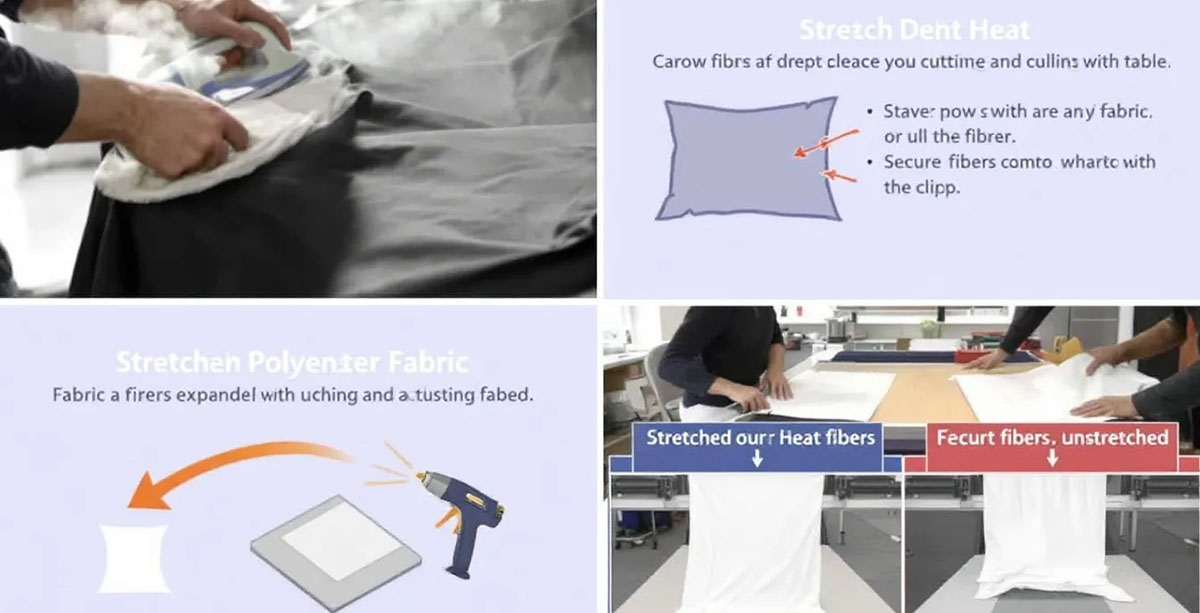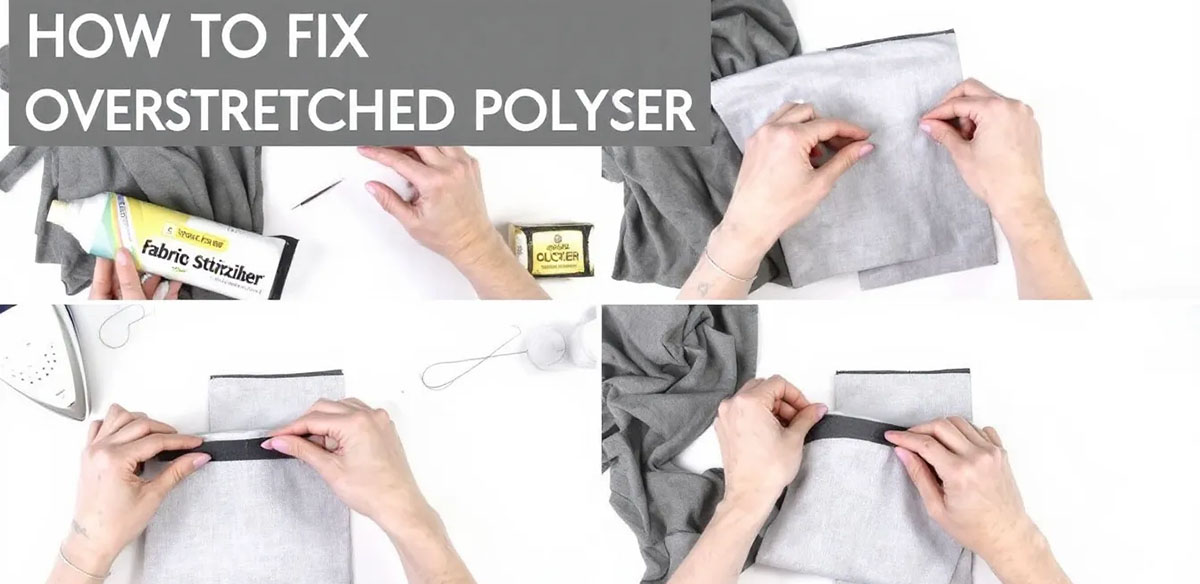Methods on How to Stretch Polyester Fabric Safely

Need to adjust your polyester garment for a better fit? This guide on how to stretch polyester will show you safe and effective techniques. Whether you need to stretch polyester using heat, manual methods, or wet techniques, you’ll find the steps here. Learn how to prepare, stretch, and secure the fabric without causing damage.
Key Takeaways
-
Polyester fabric is known for its durability, moisture-wicking properties, and versatility, making it a preferred choice for various clothing items and home furnishings.
-
Effective stretching methods for polyester include using heat, manual stretching techniques, and wet stretching, with adequate preparation and tools essential for successful results.
-
To maintain the integrity of polyester garments, appropriate washing and drying techniques, along with the use of mild fabric conditioners, are crucial in preventing overstretching and ensuring longevity.
Understanding Polyester Fabric

Polyester fabric, which is made from petroleum and is a type of polyethylene terephthalate, is well-known for its durability and ease of maintenance. This synthetic fabric has become a staple in clothing and home furnishings due to its versatility and performance characteristics. Unlike natural fibers such as cotton and wool, polyester is more resistant to wrinkles, wicks moisture effectively, and requires less maintenance.
Understanding polyester’s unique properties and its comparison to natural fibers is crucial for safe stretching.
Characteristics of Polyester Fibers
Polyester fibers are known for their strength, lightweight nature, and resistance to wrinkles. These attributes contribute to the longevity of polyester garments, making them a convenient choice for clothing. The fibers are also resistant to pilling and bubbling, enhancing the fabric’s durability.
Polyester’s considerable stretch and quick-drying properties, along with elastane and spandex, make it suitable for a wide range of applications, from everyday wear to activewear, including a polyester shirt and polyester apparel. Polyester holds significant advantages in these areas.
Comparison with Natural Fibers
While polyester outperforms natural fibers like cotton and wool in durability and moisture-wicking abilities, it is less breathable. This lower air permeability can impact comfort, especially in warm conditions. However, advancements in textile technology have allowed polyester to be processed for enhanced softness and comfort, resembling natural fibers.
Combining polyester with natural fibers enhances the fabric’s texture, performance, and longevity, especially when using blended fabrics.
Common Uses for Polyester Fabric
Polyester fabric’s versatility extends to a wide range of products. Common items made from polyester include:
-
t-shirts
-
dresses
-
skirts
-
shoes Its moisture-wicking properties make it particularly suitable for activewear, outperforming cotton in this regard.
Combining polyester with natural fibers boosts durability and wrinkle resistance, making it popular for casual wear and specialized blended garments made from synthetic fabrics.
Preparing Your Polyester Garment for Stretching
Before starting the stretching process, gather the right tools and assess the required extent of stretch.
Adequate preparation guarantees a successful outcome without fabric damage.
Gathering Necessary Tools and Materials
For effective stretching, gather essential tools such as a spray bottle, fabric softener, clean towels, and a flat surface. A form or mannequin can assist in precise shaping on the soft canvas.
These items ensure a smooth and more efficient stretching process.
Assessing the Stretch Needed
Evaluate how much additional room is needed in the garment before starting the stretching process. This assessment can involve measuring the desired increase in size in inches or setting a percentage for the overall size increase.
For instance, recognize the limited stretchability of polyester-cotton blend pants and plan accordingly.
Effective Techniques to Stretch Polyester Fabric

There are several methods to stretch polyester fabric effectively, each with its own advantages. These techniques help you select the best approach for your specific garment.
Using Heat to Stretch Polyester
Heat is a powerful tool for stretching polyester fabric. Heat relaxes the fibers, making them easier to stretch. Steaming the fabric or using a warm iron at a low setting can effectively loosen the fibers without causing damage.
Avoid excessive heat to prevent damage to the polyester fabric. Using a spray bottle with a water-fabric softener mixture can also help relax the fibers for easier stretching.
Manual Stretching Techniques
Manual techniques are ideal for minor fit alterations. Begin by inspecting and measuring the necessary stretch in inches or as a percentage.
Stretch the material on a flat surface using your hands, tugging on the edges and pushing from inside. Placing heavy items at the edges helps maintain the shape while the fabric dries.
Wet Stretching Method
Wet stretching involves soaking the polyester garment in warm water mixed with hair conditioner for at least 15 minutes. After soaking, stretch the fabric by hand or gently use weights while it remains wet.
Once the desired stretch is achieved, gently wring out excess moisture and air-dry the garment to preserve its new size.
Securing and Maintaining the Stretch
Securing the stretch properly is crucial to retain the new size and shape after stretching polyester fabric.
Proper techniques ensure long-lasting results.
Securing Stretched Fabric
Securing the fabric while it dries is essential to maintain the enhanced fit. Use clamps or weights to hold the fabric until it is completely dry. This ensures the fabric retains its new dimensions and shape.
Placing weights on stretched areas helps maintain shape and the desired fit and shape.
Proper Drying Techniques
Air-drying is recommended for retaining the stretch in polyester garments. This preserves the fabric’s moisture-wicking properties while maintaining its stretched form.
Firmly securing the fabric to a flat surface during drying minimizes wrinkles and ensures an even stretch.
Fixing Overstretched Polyester

When a polyester garment becomes overstretched, specific methods can restore its original size and shape.
These methods involve careful heat application and physical adjustments.
Restoring Elasticity
Restoring elasticity in overstretched polyester requires gentle heat application. Minimal heat effectively restores the fabric’s stretchiness without causing damage. Avoid overheating to prevent fabric damage.
Proper heating techniques ensure polyester retains its quality while regaining elasticity.
Adjusting Fit and Shape
Fixing an overstretched polyester garment aims to restore snugness and original shape without compromising material quality. Read care labels and test a small area of the fabric before applying any treatments to ensure compatibility.
Preventative Measures for Future Stretching Issues
Preventative measures help avoid future stretching issues with polyester garments. Proper washing and drying techniques are key to maintaining the fabric’s integrity.
Appropriate Use of Fabric Conditioners
Mild fabric conditioners or baby shampoo are recommended for polyester garments. These products preserve the fabric’s softness and prevent overstretching.
Optimizing Laundry Settings
Choosing the right wash settings is crucial for retaining the shape and texture of polyester garments. Washing in cold water or warm water maintains color and prevents shrinkage.
Turning items inside out before washing minimizes fading and wear of clothes.
Troubleshooting Common Stretching Problems
Common issues during the stretching process include shrinking, shrinkage, and wrinkles. Addressing these problems ensures successful results.
Managing Shrinkage
Polyester’s resistance to shrinkage makes it a preferred choice in garment making. However, polyester blends tend to shrink more than 100% polyester fabrics. Excessive heat can result in shrinkage or damage to elasticity.
Use a gentle heat setting when working with polyester. This helps prevent shrinkage.
Removing Wrinkles
Removing wrinkles from polyester fabric maintains a polished appearance and prolongs garment life. Ironing on low heat with a pressing cloth prevents direct contact that could damage the fabric and aids in wrinkling removal.
Steam effectively eliminates wrinkles without direct heat contact.
Summary
Summarize the key points covered in the blog post, reinforcing the importance of understanding polyester fabric and the techniques for stretching it safely. Conclude with an inspiring note encouraging readers to apply the knowledge gained.
Contact MH
MH offers polyester fabrics. Please contact us for more details or inquiries. We're here to help!


